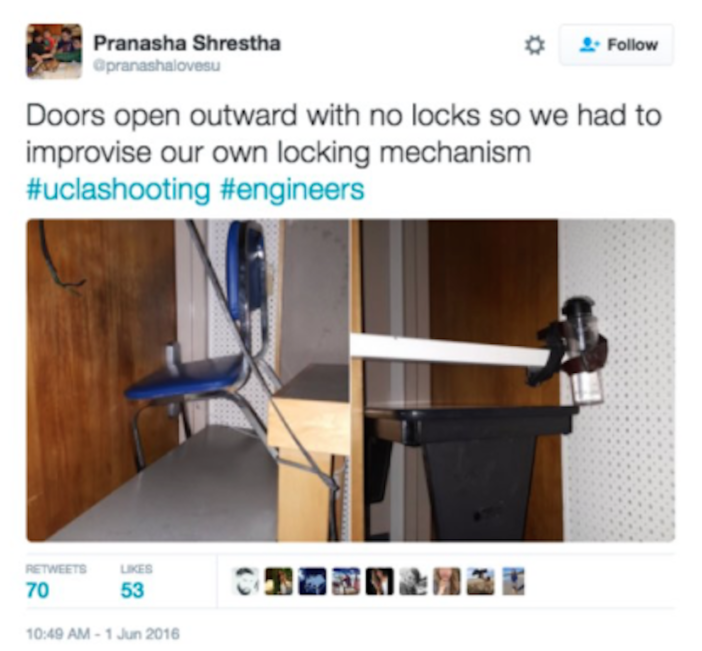The response to Wednesday’s shooting on the UCLA campus was both scary and chaotic for those who experienced it firsthand.
Within minutes after the mid-morning June 1 shooting in Engineering Building 4, campus officers immediately made the right call in alerting everyone of a possible shooting suspect on the campus.
The police response was impressive and massive. Hundreds of officers from UCLA campus police, LAPD, FBI, ATF and other agencies responded.
The police response was in no way excessive.
With an enrollment of nearly 45,000 students plus instructors, employees and other support personnel, the campus created significant logistical challenges for responding officers.
The campus itself is 419 acres made up of dozens of buildings — all of which would have been occupied at that time of day. This, along with numerous entrances and exits to the campus, meant every single one of them needed to be covered.
Securing an area that large is challenging even for the largest police departments.
In Orange County, some may recall the 2012 lockdown of the Cal State Fullerton campus after multiple armed suspects wanted for robbery and attempted murder fled onto the grounds during a police pursuit.
The response by the Fullerton Police Department and other agencies was massive. The search of the campus required it to remain on lockdown for nearly eight hours.
Fortunately, in the UCLA shooting detectives were able to piece together the circumstances of the shooting and eventually make a determination it was a murder suicide.
Within hours, the all clear was given.
Lessons learned from previous incidents around the country were evident in the way the police, campus personnel and students responded to the shooting.
The use of an alert system worked exceptionally well. Within minutes, Bruin alerts were communicated to students, faculty and employees.
The Bruin Alert system notified everyone of police activity at Engineering Building 4 at 9:49 a.m. and to avoid the area. At 9:50 a.m., a second message alerted students of the shooting. It told them to respond to a secure location and “deny entry (lockdown) now!”
There was no doubt anyone who saw the message would know it was serious.
Education and training of both students and campus staff paid off. Hundreds of students went into lockdown mode and secured their rooms.
Students, faculty and staff locked their doors. For those doors that could not be locked, students took steps to barricade and secure them.
Teams of officers cleared rooms, searching every person they came in contact with. Out of an abundance of caution, many students were detained and searched — a necessary precaution when an unknown suspect is at large.
On another note, thousands of people on campus took to social media to try and determine what was going on. In many cases, what was posted was misinformation and speculation.
This is another very good reason why it’s important to follow law enforcement agencies on Twitter, Facebook and other social media feeds. Information posted on these platforms is consistently the most accurate.
Facebook, Twitter and other social media also allowed many of those locked down to inform family and friends they were OK and not to worry, which was a real blessing to many parents.
The shooting on the UCLA campus is another tragic reminder of the real dangers that exist in the world today. But the incident also highlights the progress police departments and college campuses have made in keeping people safe.
We can all just hope another similar incident doesn’t happen again any time soon.
Joe is a retired Anaheim Police Department captain. You can reach him at jvargas@behindthebadgeoc.com.
 Behind the Badge
Behind the Badge




